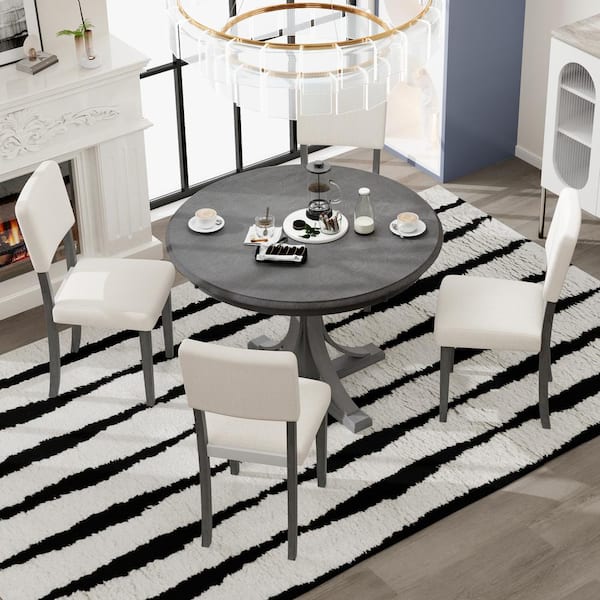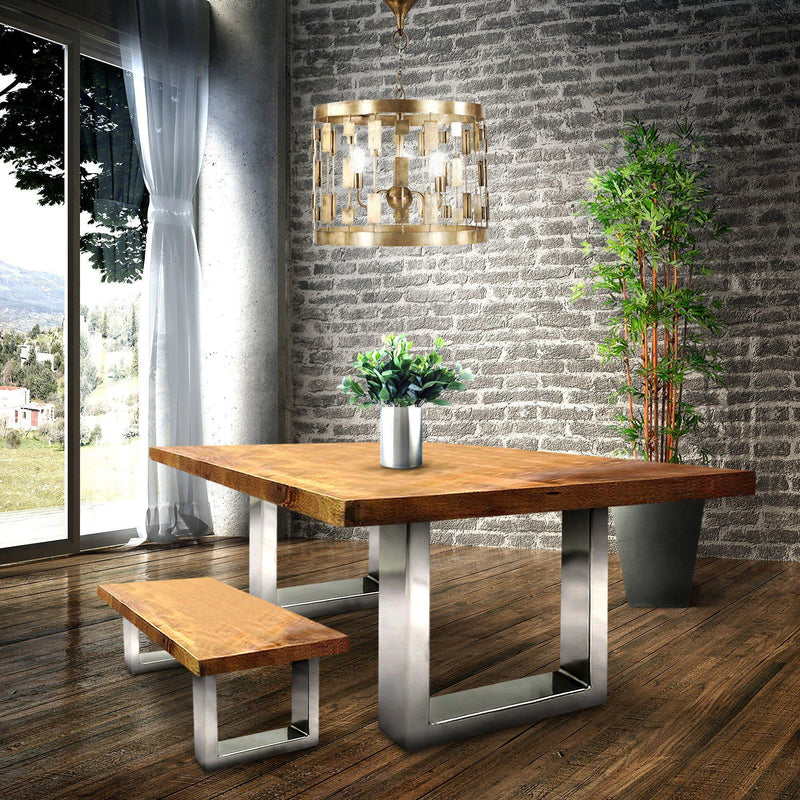Expert Tips for Installing Dining Room Table Legs for Maximum Security
When it comes to setting up dining room table legs, accomplishing maximum stability is critical for both performance and looks. What particular strategies can boost security even further?
Choose the Right Legs
When choosing the ideal legs for your dining-room table, it is important to take into consideration both functionality and aesthetic appeals. The legs you choose will dramatically influence the overall layout and stability of the table. Initially, evaluate the table's intended use; if you expect regular celebrations, tougher legs, such as those made from solid wood or steel, may be much more ideal, as they use enhanced resilience and support.
Next, think about the height and design of the legs in regard to the table top. Conventional dining tables normally range from 28 to 30 inches in height, so ensure the legs line up with this standard for comfort. The style of the legs need to complement the style of the table top-- whether it be contemporary, rustic, or conventional. Conical legs can include a modern touch, while transformed legs could convey a more classic visual.

Select Appropriate Equipment
How can the best equipment improve the security and longevity of your eating area table? The choice of proper equipment is essential to ensuring that the legs of your table are securely affixed and able to stand up to normal usage. High-grade screws, screws, and brackets provide the necessary toughness to sustain the weight of the table, along with any kind of added tons put upon it throughout meals or events.
When choosing screws, choose those made from long lasting materials such as stainless steel or brass, which withstand rust and preserve honesty in time. The size of the screws is similarly crucial; they should permeate deeply right into the table's framework without endangering stability. For bolted connections, take into consideration making use of lock washing machines to stop loosening as a result of vibration or movement.
In addition, using corner braces can include added assistance, especially for larger tables or those with heavier tops. These braces distribute weight uniformly and help preserve the table's shape. Making sure that the equipment you select is ideal for the specific materials of your table will additionally enhance its overall stability and longevity, permitting you to enjoy your eating experience for years to come.
Ensure Correct Alignment
Appropriate placement of dining space table legs is important find this for both visual appeal and useful stability. To accomplish ideal alignment, begin by measuring the distance from linked here the table's edges to the leg attachment factors.
Make use of a degree during installment to confirm that each leg is perpendicular to the table top. This step is crucial, as even small inconsistencies can rise right into significant stability problems gradually. It is recommended to note the wanted leg settings on the bottom of the table with a pencil or concealing tape prior to securing them. This technique functions as an aesthetic guide, enabling for adjustments as needed.
Additionally, confirm the alignment after the initial screws are tightened, as adjustments might be required before fully protecting the equipment. By focusing on appropriate placement, you not only enhance the table's total layout however additionally guarantee that it stays practical and secure for several years to find.

Think About Weight Distribution
After ensuring proper placement of the dining-room table legs, it is very important to take into consideration weight click resources distribution to enhance stability and functionality. dining room table legs. Proper weight distribution is vital in preventing guaranteeing and wobbling that the table can sustain its intended tons without threat of tipping or falling down
When positioning the legs, ensure they are positioned at equal distances from the facility of the table to uniformly distribute the weight across the structure. Think about the weight of the table top and any type of things that will often hinge on it, such as decorative items or tabletop appliances. Tables with larger surface areas should preferably have legs located closer to the corners, as this makes best use of the base of support and decreases the threat of instability.
Furthermore, if the table is intended for usage in a high-traffic area, think about making use of heavier materials for the legs or adding stabilizing aspects, such as cross-bracing or a reduced rack - dining room table legs. These adjustments can aid maintain balance and avoid shifting during use. Inevitably, a well-considered weight distribution method will considerably boost the table's total performance, ensuring it stays a eye-catching and practical focal point for your eating room
Test Stability Prior To Usage
Examining the stability of the dining space table prior to usage is an important action that must not be ignored. If the table reveals instability, identify the legs or joints that might need change.
Next, examine that all fasteners and screws are tightened up appropriately. Loosened connections can lead to instability and potential damage with time. If necessary, make use of wood adhesive on joints to boost security, ensuring to permit sufficient drying out time.

Verdict
In conclusion, the installation of dining-room table legs requires mindful consideration of materials, positioning, equipment, and weight distribution to achieve maximum stability. By picking high-grade fasteners and tough legs, making sure specific alignment, and distributing weight uniformly, the structural honesty of the table can be considerably enhanced. Performing a stability examination prior to regular use better guarantees that the table will withstand day-to-day stress, thereby offering a trustworthy and secure eating experience.
When it comes to mounting eating room table legs, achieving optimum stability is paramount for both functionality and appearances. The legs you choose will substantially impact the total layout and security of the table (dining room table legs). Basic dining tables typically range from 28 to 30 inches in height, so guarantee the legs align with this criterion for comfort.Proper alignment of eating area table legs is necessary for both visual appeal and functional security.In conclusion, the installation of eating space table legs calls for careful consideration of products, hardware, weight, and placement distribution to accomplish maximum stability